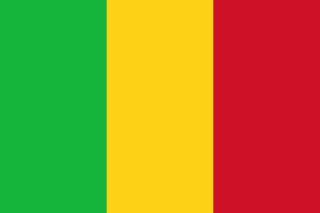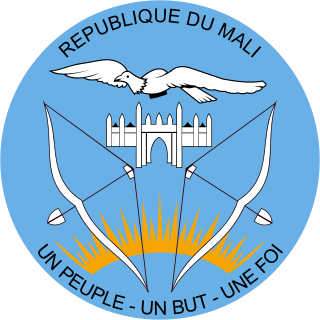 |
|---|
| This article is part of a series on the politics and government of Mali |
Parliament |
|
A constitutional referendum was held in Mali on 12 January 1992. The new constitution would restore multi-party democracy, create a division of powers between the President and National Assembly, and set a presidential term of five limits. It was approved by 99% of voters with a 43.5% turnout. [1]

Mali, officially the Republic of Mali, is a landlocked country in West Africa, a region geologically identified with the West African Craton. Mali is the eighth-largest country in Africa, with an area of just over 1,240,000 square kilometres (480,000 sq mi). The population of Mali is 18 million. 67% of its population was estimated to be under the age of 25 in 2017. Its capital is Bamako. The sovereign state of Mali consists of eight regions and its borders on the north reach deep into the middle of the Sahara Desert, while the country's southern part, where the majority of inhabitants live, features the Niger and Senegal rivers. The country's economy centers on agriculture and mining. Some of Mali's prominent natural resources include gold, being the third largest producer of gold in the African continent, and salt.

The 1992 Constitution of Mali was approved by a referendum on 12 January 1992 after being drawn up by a national conference in August 1991. The constitution provides for multi party democracy within a semi-presidential system.